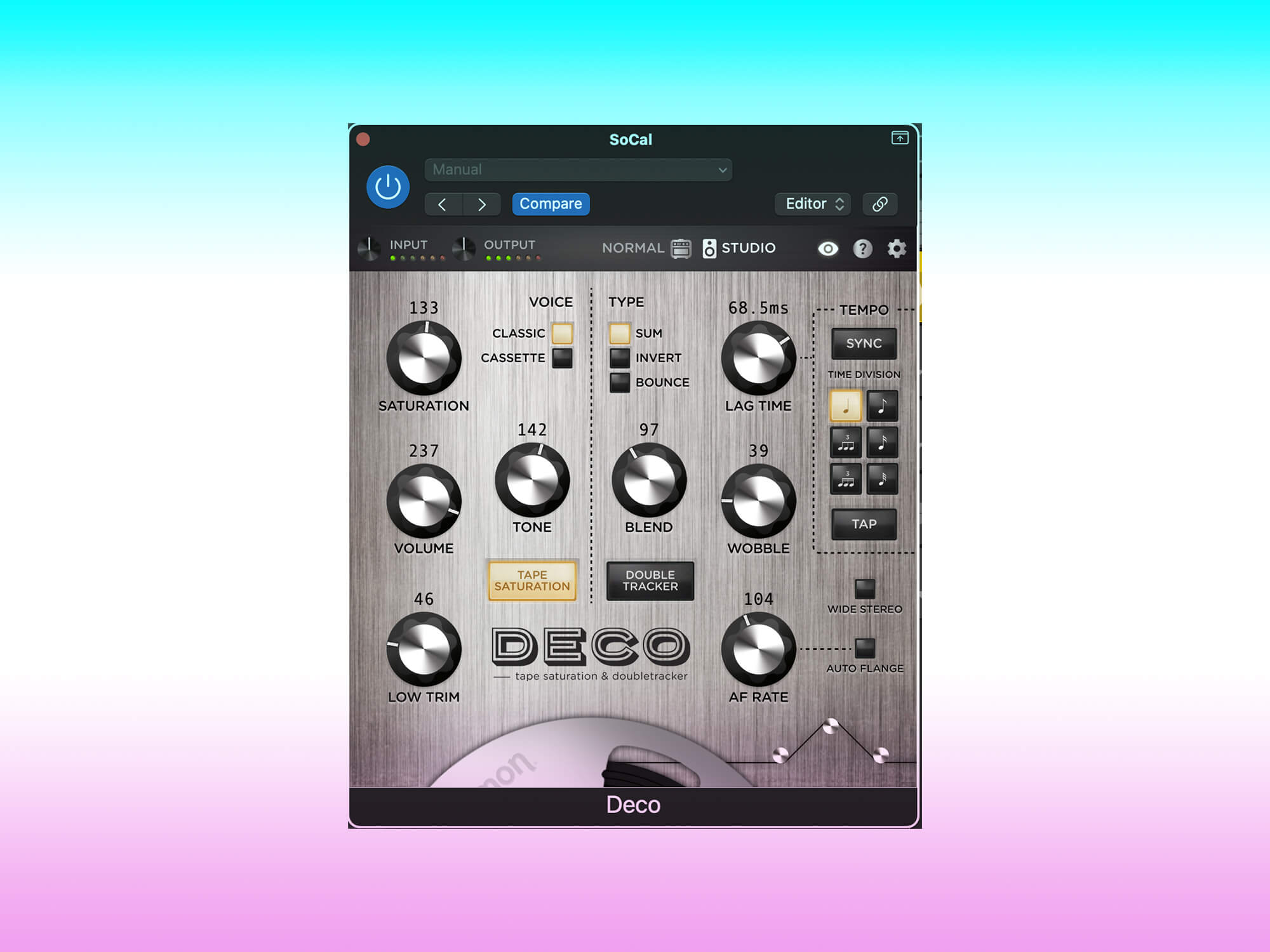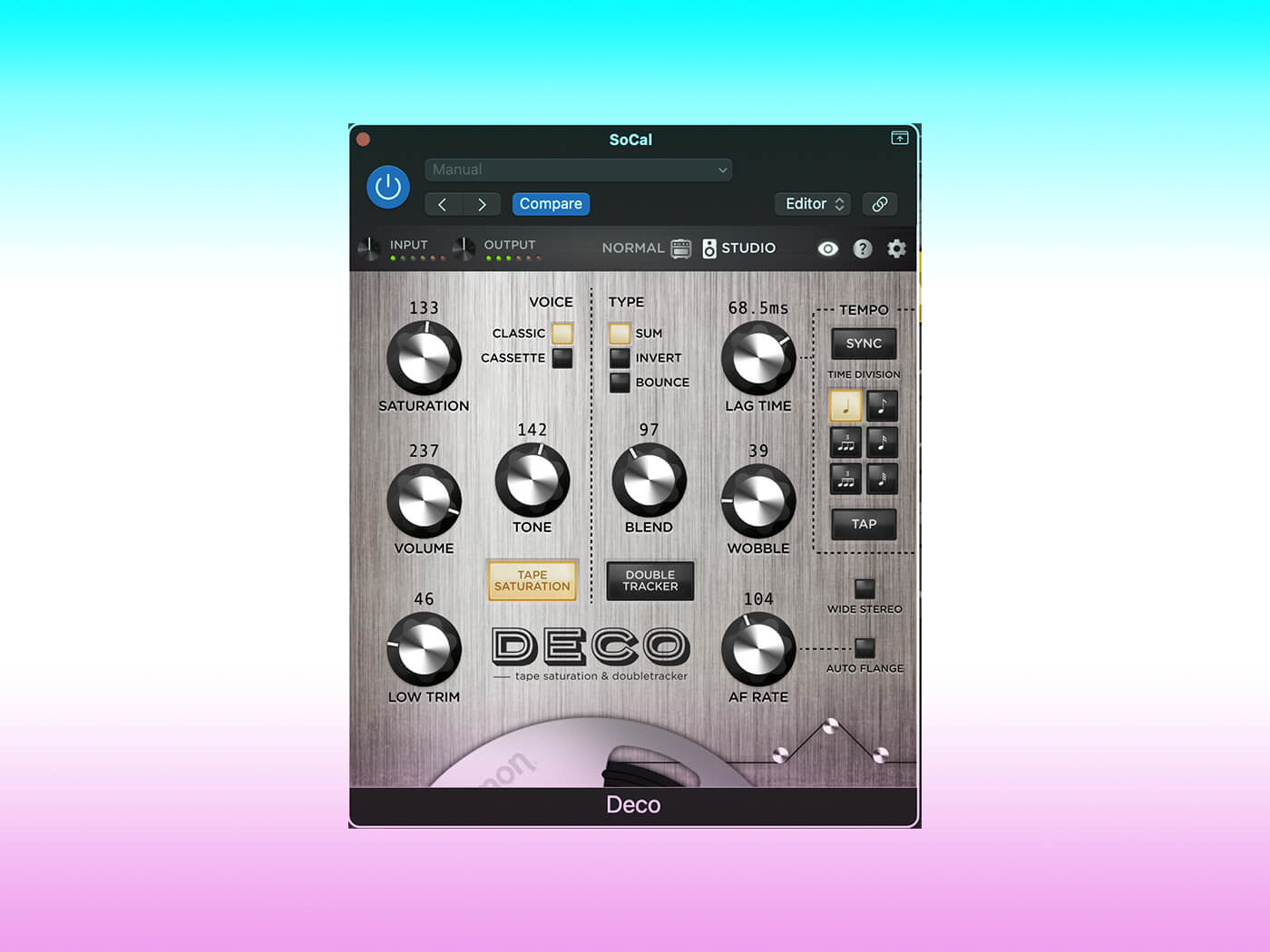Strymon Deco brings a unique guitar pedal into the DAWs for producers
The Strymon Deco hardware has been loved by in-the-know guitarists for the secret sauce it adds to a signal chain. Can Strymon transfer that offer to producers as a plugin?

Strymon Deco plugin
Review Overview
Our rating
8
Our verdict
⊕ Wide range of delay-based effects
⊕ Multiple saturation and blend modes
⊕ Wide Stereo mode sounds very natural
⊕ Incredible value for money
⊖ Auto flanging lacks adjustment
$79, strymon.net
During the early days of multitrack recording, artists and producers began to look for more sounds to incorporate into records. Technology during the mid-60s was limited to tape machines, physical effects and basic outboard equipment. However, this didn’t prevent the engineers of the time using the gear in incredibly ingenious ways.
For instance, John Lennon notoriously hated recording double-tracked vocals (the process of recording the same vocal part twice to make it sound thicker). So, the engineers at EMI devised a way of creating this effect automatically by using a tape machine that wasn’t quite in sync to create micro-adjustments in timing. Shortly after, those same engineers developed the flanging effect by leaning on the corner of a tape machine to push it slightly out of sync with the signal it was doubling, creating a psychedelic comb-filtering effect on the recording.
It’s these tape-based effects that Strymon has recreated in the Deco. The Deco has been around as a hardware stompbox for many years and has quietly gained a reputation for being a sleeper pedal – an underdog pedal that people who really know what they’re doing can’t live without. Now, Strymon has released it as a $79 plugin for everyone to access.
What’s it all about?
The Deco – despite the relatively small and simple interface – does a surprisingly large amount. It’s sort-of a distortion effect, sort-of a modulation effect, sort-of a delay. It’s all of these and it’s also none of these.
Many brands have emulated the sound of tape to give digital projects a hint of the analogue (such as Waves J37 and the Universal Audio Magnetic Tape Bundle). But Strymon claims to be the first company to emulate the interaction of two tape machines in parallel. This opens up a world of sounds that a single machine can’t create due to the timing differences between them.
Sounding out
The left-hand side of Deco is for saturation – providing the analogue joy of tape emulation. One of the things that we listen for when using a plugin that offers analogue-style warmth is what the effect does before any controls have been adjusted. The Deco does an excellent job at adding some character to the sound – the high-end is softened and the lower frequencies are boosted slightly to create an instantly warmer sound.

When dialling up the saturation knob, this starts to bring in some pleasing distortion to the signal and adds some harmonics that thicken and enhance. The dials all go from 0 to 255; it’s not quite clear what the scale is here, but we find ourselves adjusting by ear, so the numbers don’t impede the workflow.
At low to medium settings, the control adds subtle warmth and from the halfway point upwards, this increases into overdrive and distortion. Depending on the source, the desired level of saturation will vary – subtle warmth sounds tasteful on vocals, whereas crunchy and slammed sounds spectacular on drums.
The saturation side also contains a tone control, a master volume, and a particularly useful Low Trim control. Handily, this rolls off some of the low-end rumble that can end up in the processed signal as a result of the saturation and tape emulation.
Doubling up
The right-hand side of the plugin is the double-tracking side, where modulation and delay controls can be found. The most important control is the lag time. This adjusts the synchronisation (or indeed, lack of synchronisation) between the two tape machines and ranges from -0.3 right through to a massive 500ms on what feels like a logarithmic scale. If you want an exact number of milliseconds, you can double-click on the readout and type in your desired lag time – but we never need this; it’s accurate enough by ear and eye.

The automatic double-tracking creates that thick, slightly chorused effect you’d expect. It sounds most realistic around 25ms, with 30ms or more sounding a little too much like a dedicated chorus. One of the nice touches that Strymon has included is the option to have a widened stereo image when using the track in stereo. By pressing a little button on the screen, the plugin hard-pans the two versions of the audio for a wider double-tracked effect – we find this the most pleasing of the double-tracking sounds.
Modulation, modulation
Because the earliest forms of delay and flanger were created using tape machines, the Deco can achieve these effects but with limited functionality. The auto-flanger is simply either on or off and sets all the plugin controls to create the perfect flanging tone. This sounds exactly as one might expect, but it would be nicer if Strymon hadn’t greyed out the controls to allow adjustment to taste from their dialled-in auto setting, without having to recreate the effect from scratch to achieve this level of control.
The delay functionality works by increasing the lag time into audible gaps. There is a sync button with some functional subdivisions, and other patterns can be found manually. However, because this plugin is emulating two tape machines and not a tape delay, there’s no feedback control. Therefore, you can only get one repeat. Perfect for slapback, but less useful for more ambient sounds.
This is a superb-sounding plugin that does what Strymon claims exceptionally well. It adds pleasing tape saturation and can create automatic double tracking well, and the additional sounds are a bonus.
In pedal form, the features in the Deco are unrivalled. However, in a plugin, it’s more tricky to recommend unreservedly. We can’t think of a direct rival for the Deco as a whole, but there are other plugins that specialise in each of the individual elements. Waves and Universal Audio both offer class-leading tape emulation, FabFilter and Soundtoys offer amazing saturation plugins, while iZotope and Antares cover double tracking. The Deco has stiff competition, even though it offers incredible value for money.
Key features
- Tape emulation
- Saturation
- Double tracking
- Flanging & modulation
- Simple delay